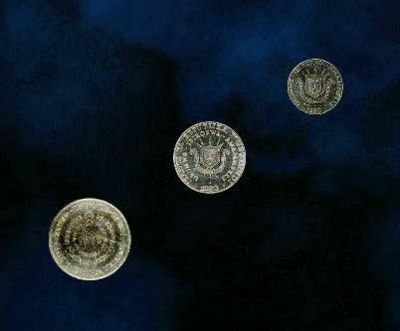布隆迪法郎
布隆迪法郎简介
1BIF=100 cents(分)
The history of the Burundi franc
Burundi was a part of German East Africa from 1890 until the Belgians occupied it in 1916, Burundi became part of Belgian controlled trust territory of Ruanda-Urundi. Burundi became an autonomous territory in 1961, gained independence as an independent kingdom in 1962, and finally became a republic in 1966.
During German times, the German East African rupie circulated until 1916. After Belgium’s occupation of Burundi, the Belgian Congo franc circulated throughout Burundi. The Belgian territories of Congo, Rwanda and Burundi all used the same currency until 1960 when Congo left the currency union at which time the Banque d’Emission du Rwanda et du Burundi was established to issue banknotes. The Rwanda-Burundi franc was established at par with the Belgian franc. In 1964 the Banque du Royaume du Burundi was established and the new Kingdom of Burundi began issuing its own franc notes. In 1966 the role of issuing the national currency was taken over by the Banque de la Republique du Burundi, who has held that responsibility since.
The Burundi franc is divided into 100 centimes although since the currencies inception in 1964 no coin have been issued in centimes due to the low value. The currency’s ISO 4217 code is BIF, in Burundi prices are written using “FBu” after the amount i.e. 100 FBu is 100 francs.
Coins have been issued in denominations of 1, 5, and 10 FBu., although they are seldom if never used anymore due to their low value. Banknotes are currently issued in the following denominations, 10, 20, 50, 100, 500, 1000, 2000, 5000 and 10 000 francs.
布隆迪法郎样币 布隆迪法郎铸币
1BIF=100 cents(分)
The history of the Burundi franc
Burundi was a part of German East Africa from 1890 until the Belgians occupied it in 1916, Burundi became part of Belgian controlled trust territory of Ruanda-Urundi. Burundi became an autonomous territory in 1961, gained independence as an independent kingdom in 1962, and finally became a republic in 1966.
During German times, the German East African rupie circulated until 1916. After Belgium’s occupation of Burundi, the Belgian Congo franc circulated throughout Burundi. The Belgian territories of Congo, Rwanda and Burundi all used the same currency until 1960 when Congo left the currency union at which time the Banque d’Emission du Rwanda et du Burundi was established to issue banknotes. The Rwanda-Burundi franc was established at par with the Belgian franc. In 1964 the Banque du Royaume du Burundi was established and the new Kingdom of Burundi began issuing its own franc notes. In 1966 the role of issuing the national currency was taken over by the Banque de la Republique du Burundi, who has held that responsibility since.
The Burundi franc is divided into 100 centimes although since the currencies inception in 1964 no coin have been issued in centimes due to the low value. The currency’s ISO 4217 code is BIF, in Burundi prices are written using “FBu” after the amount i.e. 100 FBu is 100 francs.
Coins have been issued in denominations of 1, 5, and 10 FBu., although they are seldom if never used anymore due to their low value. Banknotes are currently issued in the following denominations, 10, 20, 50, 100, 500, 1000, 2000, 5000 and 10 000 francs.
布隆迪法郎样币 布隆迪法郎铸币

附件列表
词条内容仅供参考,如果您需要解决具体问题
(尤其在法律、医学等领域),建议您咨询相关领域专业人士。
